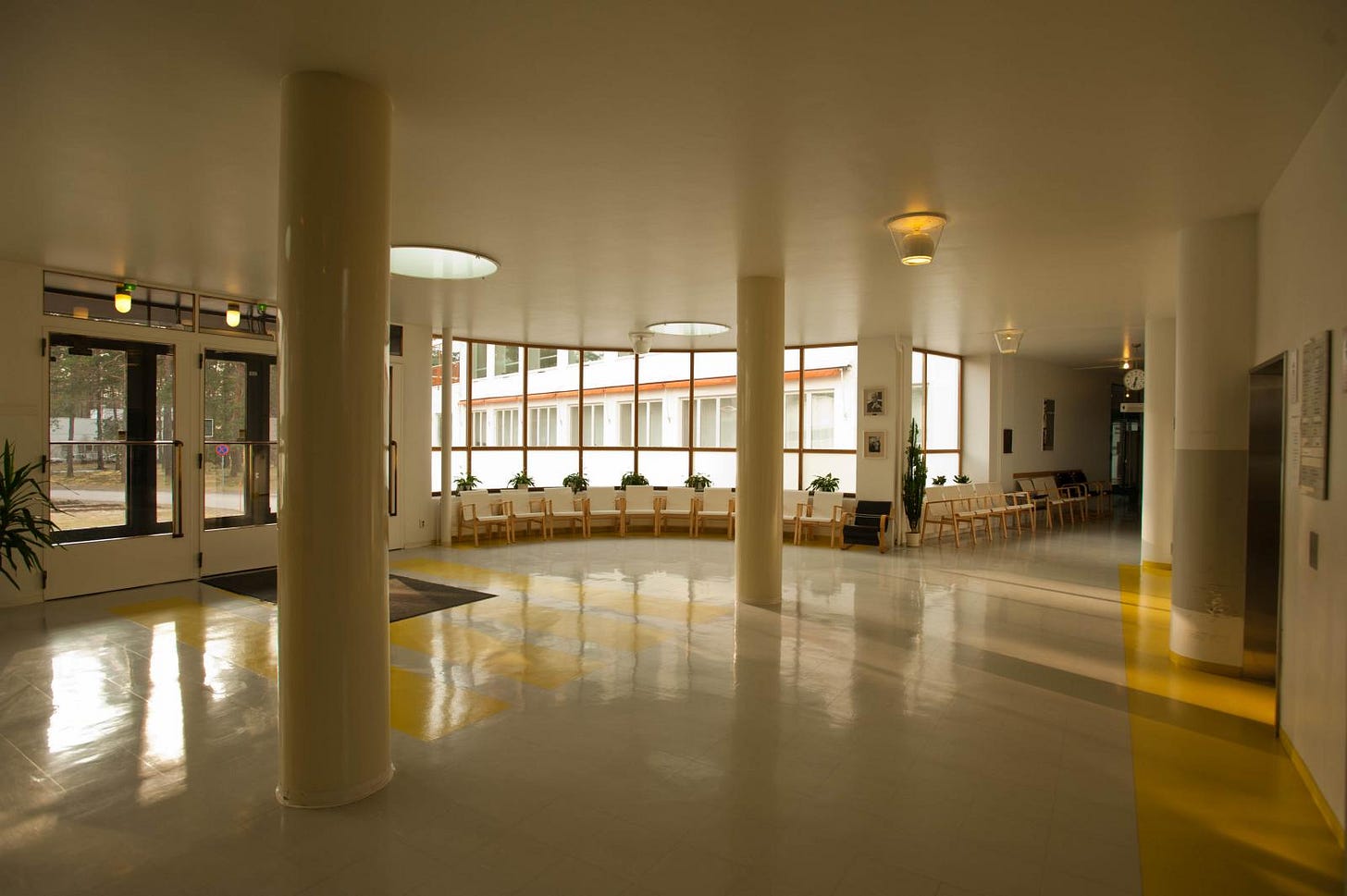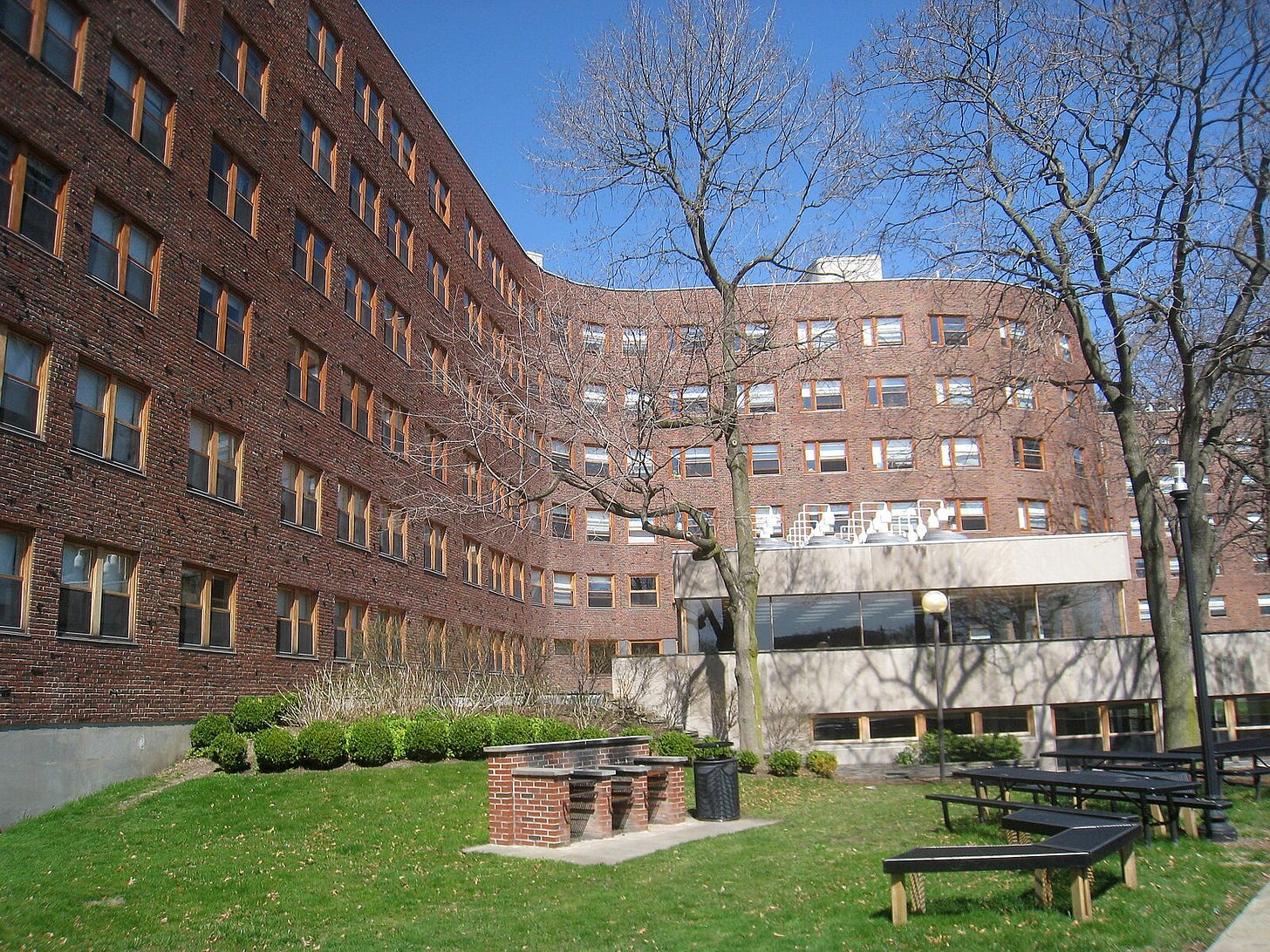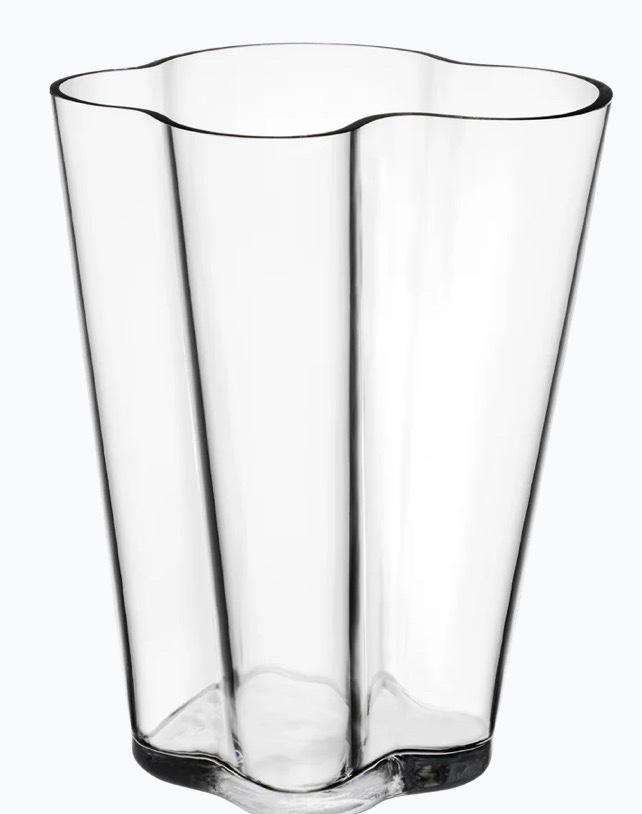Alvar Aalto (1898–1976) is one of the great masters of modern architecture. Born in Kuortane, Finland, he had a long, successful career designing all types of buildings — from major public institutions to private homes and housing projects.
Along the way, he and his wife, Aino Aalto, began creating furniture as part of their design work. In fact, Aalto’s first modern furniture pieces were made in 1929 for a sanatorium in Paimio, Finland.
A few years later, in 1935, they co-founded the design company Artek to sell their furniture, lighting, and textiles, sharing their work with audiences around the world. Today, Aalto’s designs still feel fresh and continue to influence architecture and design. Mr. Aalto had this to say about his design approach:
To make architecture more human is to make it better and to achieve a functionalism beyond the purely technical.
Let’s take a look at a few of his architectural works.
Architecture
Paimio Sanatorium
The Paimio Sanatorium opened in 1933 as a hospital for tuberculosis patients. This was a Modernist period for Aalto, and the clean visual presented by the images above and below bears witness to that.
Aalto made a concerted effort to address the patient experience. In doing so, he understood that since patients spent much of their time lying down, he should position lamps so they wouldn’t shine directly into their eyes and choose a soothing dark green for the ceiling to create a more restful atmosphere. He also designed personal cupboards for each patient, attaching them to the wall to make cleaning easier and to give each patient a sense of personal space and dignity within the communal hospital setting.
Much of the furniture throughout the sanatorium, designed by Aalto himself, embraced both functionality and humane considerations — from chairs with gentle curves to encourage better posture and breathing to specially designed sinks that minimized noise, reducing disturbances for resting patients. Every design choice reflected Aalto’s belief that architecture and environment could actively contribute to the healing process, making the Paimio Sanatorium a landmark of both Modernist design and patient-centered care.
Aalto and his wife Aino designed the sanatorium’s furniture and interiors for this project. One of the most famous results of their work is the Paimio Chair, shown below, created in 1932 for the patients’ lounge areas. The chair’s gently curved plywood frame was designed to support the patient’s posture and ease breathing, reflecting the same patient-centered philosophy that guided the building’s architecture.
Aalto and Aino’s innovative work with bent plywood techniques was ahead of its time. It would later influence notable designers such as Charles and Ray Eames—more on Aalto’s future furniture designs.
Writing on the topic of Finnish Modernism, the UK online magazine Fusedmagazine.co.uk said of Aalto:
His tendency for functionalism often had elements of humanism, in particular, a softening of corners and a liberal use of wood amongst other natural materials to create a more organic approach to modern architecture as well as furniture and glass design. Aalto’s organic approach set Finland apart from its contemporaries in the early modernist movement, blending form and function to create sensuous and liveable spaces for the modern world that still resonate today.
Viipuri Library
The Vyborg Library was initially completed in 1935 by Alvar Aalto when the city of Vyborg (then called Viipuri) was part of Finland. It’s one of Aalto’s early modern masterpieces, known primarily for its innovations like the undulating auditorium ceiling and his sensitive approach to natural light and materials.
After the Winter War and World War II, Vyborg was ceded to the Soviet Union, and the library suffered considerable damage over the decades due to both general neglect and wartime destruction. Remarkably, in the early 2000s, a restoration project was launched, involving a rare instance of cooperation between Finnish authorities, Russian officials (including under Putin’s presidency), UNESCO, and various private organizations.
The restoration aimed to return the library to Aalto’s original vision while preserving its historical layers. It was carefully completed by 2013, and by 2019, the building (shown above) was celebrated as a model of heritage preservation across former political divides.
It’s a compelling reminder of how architecture can transcend politics and history — and how cultural landmarks often become bridges between nations.
Baker House, Massachusetts Institute of Technology
Completed in 1949, Baker House at the Massachusetts Institute of Technology remains one of Alvar Aalto’s most essential works outside Finland. Built during a period of rapid post-war university expansion in the United States, the dormitory was carefully designed to meet the evolving needs of a growing student population. Departing from the typical rigid, uniform layout of student housing, Aalto envisioned a space that prioritized each resident's well-being, individuality, and daily experience. His warm, human-centered approach to modern architecture — deeply rooted in Scandinavian ideals — shaped both the character and atmosphere of the building, setting it apart as a thoughtful and innovative living environment.
I was struck that a designer closely associated with Modernism could work successfully with brick. Perhaps that reveals my tendency to associate brick with more traditional or casual architecture. Yet in Baker House, Aalto not only embraced the material but also used it in a warm and distinctly modern way. The dormitory stretches along the Charles River, and its gently undulating form allowed Aalto to maximize the number of rooms with river views. Those views, along with the thoughtful design, have helped Baker House earn its reputation as one of the most beloved and distinctive residences on campus.
Baker House is consistently ranked as #1 at MIT due to its strong sense of community, the stunning views of the Charles River, and its world-renowned architecture.
Furniture
Stool 60 - 1933
Designed by Alvar Aalto in 1933, Stool 60 is a simple, stackable, three-legged stool that became a landmark in modern furniture design. Its clean form and innovative use of bent plywood legs reflected Aalto’s commitment to functional, human-centered design. Lightweight, durable, and versatile, Stool 60 remains one of Aalto’s most enduring and widely produced pieces.
It is still available almost 100 years later at Artek.
Savoy Vase 1936
Designed by Alvar Aalto in 1936, the Savoy Vase is one of his most famous works. Its flowing, organic shape reflects Aalto’s interest in natural forms and his rejection of rigid modernist geometry. First shown at the 1937 Paris World’s Fair, the vase later took its name from the Savoy Restaurant. This piece is also still available all these years later from touchoffinland.com
Tea Trolley 1936
Alvar Aalto designed the Tea Trolley 900 for the 1937 World Exhibition in Paris, embodying his signature fusion of functionalism and organic form. The piece features a bent birch frame, large laminated birch wheels, a hand-woven rattan basket, and typically a ceramic-tiled tabletop — all materials selected for their natural beauty, warmth, and practicality. The trolley reflects Aalto’s belief in creating modern, human-centered designs that harmonize with everyday life.
Scandinavian Design
Architectural Digest helped us with a brief history of Scandinavian Design:
The history of Scandinavian design is intertwined with the culture and lifestyles of the Nordic countries, namely Iceland, Sweden, Denmark, Finland, and Norway. Although of course the region’s art and culture is as varied as it is in, say, North America, their attachment to local materials and the natural environment stands in stark contrast against many homegrown American home design traditions.
Scandinavian vs Nordic design
Scandinavian design specifically refers to design traditions and aesthetics from Norway, Sweden, and Denmark. Nordic design is a broader term. It includes Scandinavia (Norway, Sweden, Denmark) plus Finland, Iceland, and sometimes territories like the Faroe Islands, Greenland, and Åland. While it shares many traits with Scandinavian design, Nordic design might incorporate regional nuances, like Finland’s bold patterns (think Marimekko) or Iceland’s focus on rugged natural inspiration.
Nordic design is generally characterized by its emphasis on minimalism, functionality, and the use of natural materials. Emerging prominently in the early to mid-20th century, this design philosophy prioritized clean lines, simplicity, and objects that served both practical and aesthetic purposes. In post-war America, Nordic design gained significant traction as consumers sought a fresh, modern approach to living spaces — one that reflected both practicality and understated beauty. Its versatile and timeless qualities resonated with an audience eager for designs that were not only stylish but also accessible and functional for everyday life.













